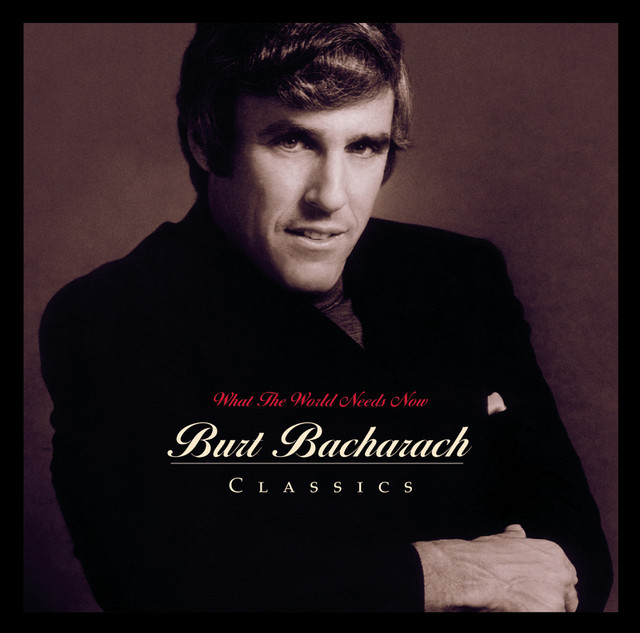February 9, 2023
Burt Bacharach, a songwriter, composer and record producer whose indelible hits at times defined their era, died Wednesday, February 8, at his L.A. home. He was 94.

Bacharach had been a rare pop maestro whose face was as well-known as his work, thanks in part to his good looks and to high-profile romances with Marlene Dietrich, Angie Dickinson and one of his greatest creative collaborators, Carole Bayer Sager.
**********
Bacharach was born May 12, 1928, in Kansas City, Missouri, but was raised in NYC.
He was always musically inclined, heavily influenced by jazz, eventually studying music formally at several universities ahead of a two-year stint in the U.S. Army (1950-1952).
It was during his Army days when he encountered crooner Vic Damone (1928-2018), working closely with him for years. He also worked for the likes of Steve Lawrence (b. 1935), Polly Bergen (1930-2014) and the Ames Brothers (Joseph, 1921-2007; Gene, 1924-1997; Vic, 1925-1978; and Ed b. 1927), honing his craft as an arranger and making himself an indispensable commodity.
Working for singer Paula Stewart (b. 1929), he married her. They were together five years.
Bacharach's first professionally recorded song, "Once in a Blue Moon," was recorded in 1952 by Nat King Cole (1919-1965).
Things accelerated when Bacharach — then a rising-star 28-year-old — was introduced to 55-year-old siren Marlene Dietrich (1901-1992), who had been in the process of creating what would become a legendary comeback nightclub act, famous for her inimitable vocals, sentimentality and a nude-illusion gown.
Bacharach was Dietrich's creative salvation, and also her lover. The icon later wrote that he had been the love of her life.
In the '60s, Bacharach left Dietrich and gave up his side hustle in favor of concentrating on crafting his unique brand of deceptively airy, definitively modern, pop tunes.
He met Hal David (1921-2012), his greatest collaborator, in 1957, and the two wrote "The Story of My Life" for Marty Robbins (1925-1982), which was an instant no. 1 country hit in the U.S. and a no. 1 pop hit in the U.K. They followed with Perry Como's (1912-2001) "Magic Moments." When that soared to no. 1 in the U.K., Bacharach and David became the very first songwriters to hit no. 1 with consecutive songs.
Still occasionally working without David, Bacharach provided "Please Stay" (1961) for the Drifters (1961), "Tower of Strength" (1961) for Gene McDaniels (1935-2011), "Three Wheels on My Wagon" (1961) for Dick Van Dyke (b. 1925), "Any Day Now (My Wild Beautiful Bird)" (1962) for Chuck Jackson (b. 1937), and "Mexican Divorce" (1962) for the Drifters, all with Bob Hilliard (1918-1971).
In 1963, Bacharach and David formalized their creative partnership, just after Bacharach had discovered a session singer in Dionne Warwick (b. 1940), whose voice would become a staple of the '60s, making her the most successful female solo act of the era after Aretha Franklin (1942-2018).
Warwick charted 38 hits with the songwriters, among them "Don't Make Me Over" (1962), "Walk on By" (1964), "Anyone Who Had a Heart" (1964), "Alfie" (1966), "I Say a Little Prayer" (1967) and "Do You Know the Way to San Jose?" (1969), among so many others.
Bacharach in 1965 wed Angie Dickinson (b. 1931), remaining with her for 15 years, all through her Police Woman (1974-1978) superstardom. Their daughter, his first child, was Nikki Bacharach (1966-2007). Troubled her whole life, she had undiagnosed Asperger's syndrome. She eventually took her own life at 40, a scarring tragedy for both of her parents, who had split in 1980.
In the '60s and early '70s, Bacharach released albums and hosted TV specials under his own name, was a big hit on Broadway with Promises, Promises (1968), and his work was recorded by many other artists, notably Dusty Springfield (1939-1999) with "The Look of Love" (1967) for the spy parody Casino Royale. His "(They Long to Be) Close to You" was a highlight for the Carpenters (Richard, b. 1946; Karen 1950-1983) in 1970, having been a lowlight for Richard Chamberlain (b. 1934) in 1963.
Another major movie success came via "Raindrops Keep Falling on My Head," the theme of the outlaw buddy film Butch Cassidy and the Sundance Kid (1969). It was an Oscar winner.
In 1973, the Bacharach-David partnership ended spectacularly with the failure of the movie musical Lost Horizon. Despite acrimony, the duo did reunite to produce the album For the First Time for Stephanie Mills (b. 1957) in 1975.
In the '80s, after several dry years, Bacharach wed collaborator Carole Bayer Sager (b. 1947), with whom he wrote "Arthur's Theme (Best That You Can Do)," one of the biggest hits of 1981, and another Oscar winner. They also wrote "Heartlight" for Neil Diamond (b. 1941) in 1982 and the no. 1 hit "On My Own" (1986), a duet by Patti LaBelle (b. 1944) and Michael McDonald (b. 1952).
"That's What Friends Are For," originally a Rod Stewart (b. 1945) track, became a 1985 anthemic response to the AIDS epidemic, featuring vocals by Warwick, Elton John (b. 1947), Gladys Knight (b. 1944) and Stevie Wonder (b. 1950).
Bacharach's co-wrote Elvis Costello's (b. 1954) Painted from Memory (1998) and worked on his 2018 album Look Now. A box set of Painted from Memory is set for release this year.
With tremendous physical and creative stamina, Bacharach continued performing live into his 90s, published the revealing memoir Anyone Who Had a Heart (written with Robert Greenfield, b. 1946) in 2014, and released with Daniel Tashian (b. 1974) the EP Blue Umbrella in 2020, nearly 70 years after his first song was recorded.
Divorcing Bayer Sager in 1991 — they remained friendly enough for a must-see 2013 live interview (posted below) for the rest of his life — Bacharach married for a fourth time in 1993. His wife Jane and their two children survive him, as does his son with Bayer Sager.





